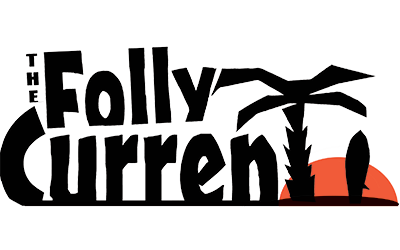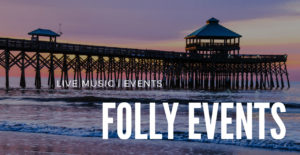Corridor Improvement Planning Begins
By Warren Cobb | Managing Editor
Let’s face it. Folly Road is ugly. Abandoned buildings sit dying on the side of the road. There are sidewalks and bike lanes that end suddenly and without warning. And congestion throughout the day is at an all-time high. It seems like someone should do something about it.
Last week, the Berkeley-Charleston-Dorchester Council of Governments (BCDCOG) held the first of several public meetings to try to get a sense of the problems presented by the Folly Road Corridor from the Wappoo Bridge to Folly Beach. The consultant hired to manage the study, Victor Dover of Dover-Kohl and Partners out of Miami, began the April 23 meeting held at the Lowcountry Senior Center, setting the scene not for what the corridor looks like today, but what it could look like 20-40 years from now.
Throughout the presentation, Dover discussed a multitude of issues to be addressed by the Folly Road study, as well as current best practices in Complete Streets and sustainable town and transportation planning, pedestrian and bike-oriented street design, integrating “green” infrastructure, and preserving community character. The idea was to explore the potential to remake Folly Road as a more sustainable, multimodal corridor, which (they say) could become a precedent for the Charleston region.
“We’re here to help visualize the future before it comes,” Dover said. “What should be the same, what should be different? Not just for the streets, but what’s along the streets.”
Dover also introduced an upcoming series of hands-on meetings where citizens will be invited to let their imaginations run wild. At those meetings, held May 7-13 at the new First Baptist School Activity Center, 2051 George L. Griffith Blvd., large maps will be provided, as well as magic markers, and participants will be able to literally draw in what they would like to see along Folly Road.
This is not limited to creating a “complete street” on Folly Road. Complete Streets is a buzz term for a roadway with four lanes of traffic, bike lanes on both sides, and a five-foot-wide sidewalk on both sides. Dover says other factors should come into play, such as trees along the road and in the medians, connectivity between neighborhoods and shopping centers, changes in speed and modality, how and where should new development or re-development take place along he corridor, and an improvement of the general aesthetic of the corridor. “I think, if it’s not beautiful, it’s not a complete street,” Dover said.
Dover reported that his company’s ideal of a “complete street” includes the following: It creates welcoming and inviting streets. It improves quality of life. It balances moving people, not just cars. It enhances safety. And most importantly, he said, it enhances economic vitality.
During the meeting, the audience had a chance to participate in a non-scientific, but quite fun interactive survey. About 100 hand-held, digital, remote survey response devices were handed out to the crowd of about 175 people. Here’s a snapshot of the responses:
• 62 percent of respondents said they hated the way the Folly Road Corridor looked.
• 76 percent live within a half-mile of the corridor.
• 34 percent have lived within a half-mile of the corridor for 10 to 19 years.
• 60 percent are 65 or older (the meeting was at the senior center, after all).
• 89 percent said their parents walked or biked to school.
• 74 percent said their children/grandchildren do not walk to school.
• 52 percent said they never walk or bike to the store.
• 57 percent said they never walk or bike to a park.
• 61 percent said they travel on Folly Road daily.
• 55 percent said mid-day is the most frequent time they travel (39 percent said they use the road for their morning and/or evening commute).
• 96 percent said a car (but not carpooling) is the way they use the road most often.
Dover said the results of the May work sessions will be distilled into a single plan, with the first draft due by the end of the summer 2015. The project is a joint effort overseen by the BCDCOG in partnership with Charleston County, the City of Charleston, the Town of James Island, the City of Folly Beach and the S.C. Dept. of Transportation.
For more information, please visit www.bcdcog.com.

